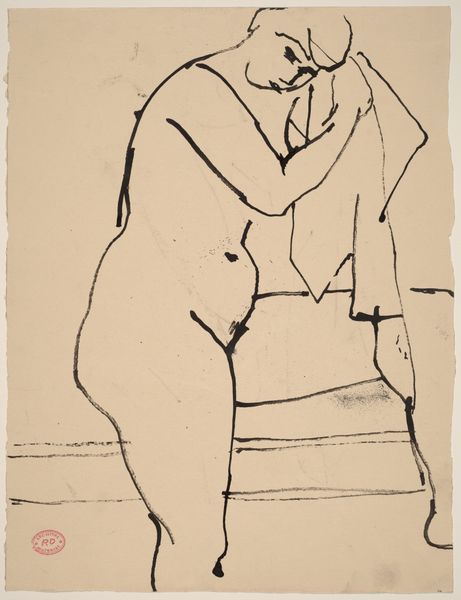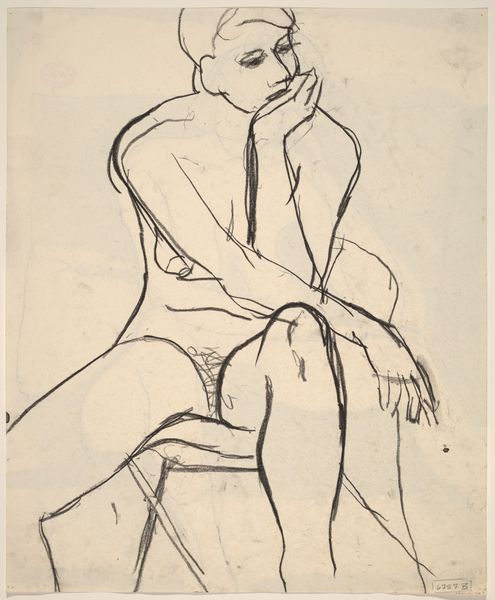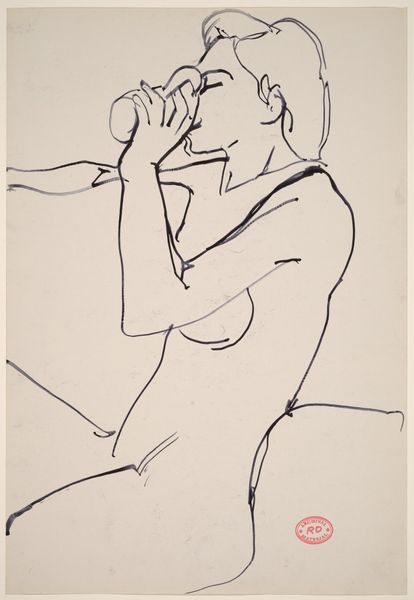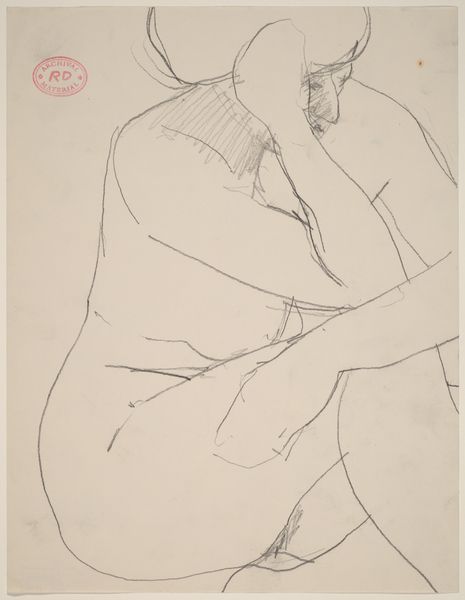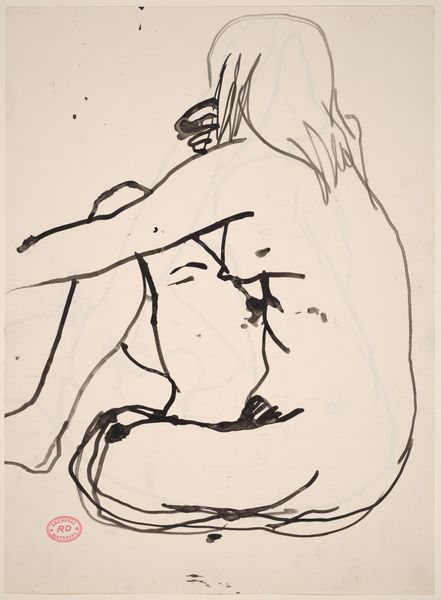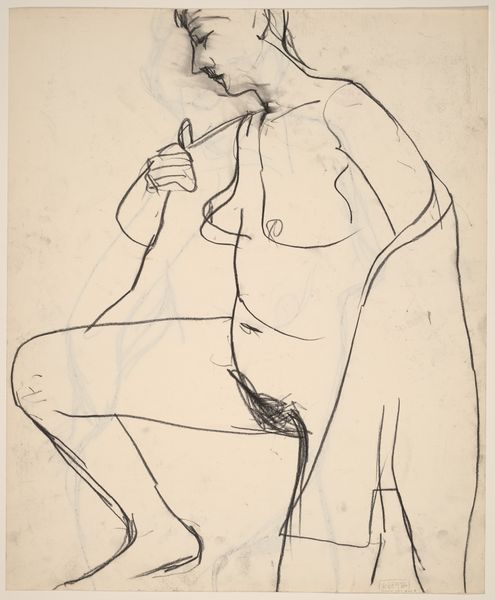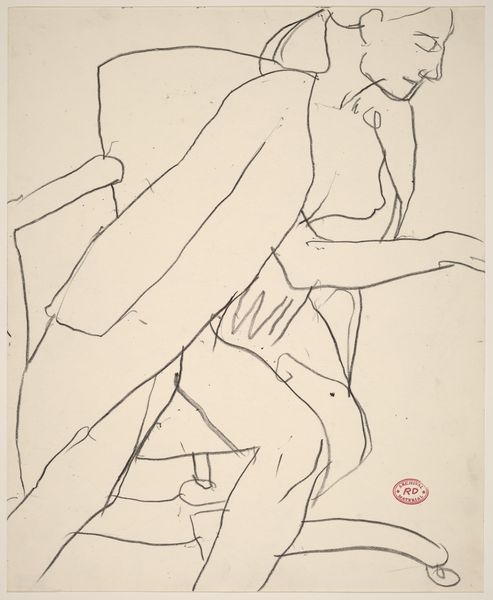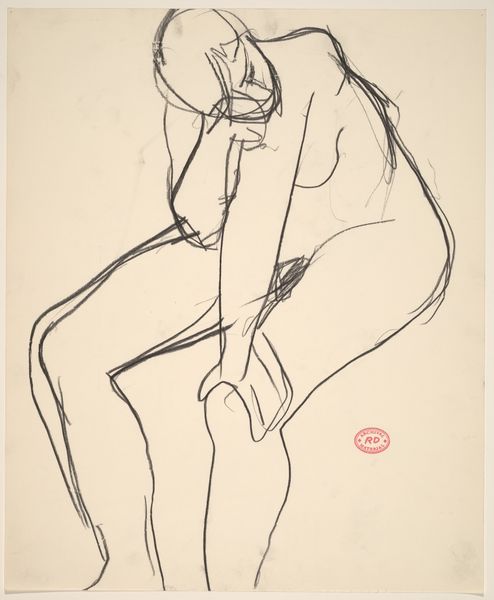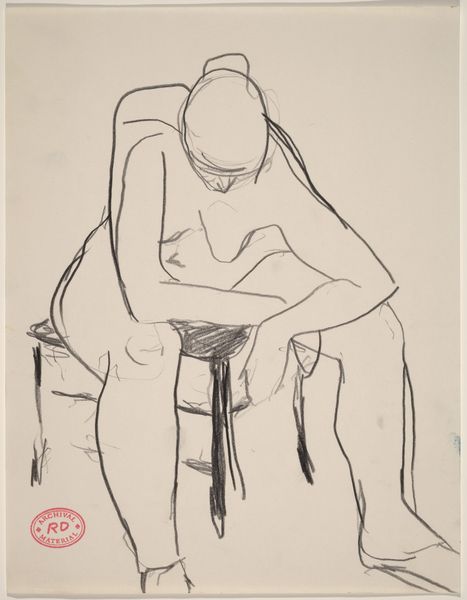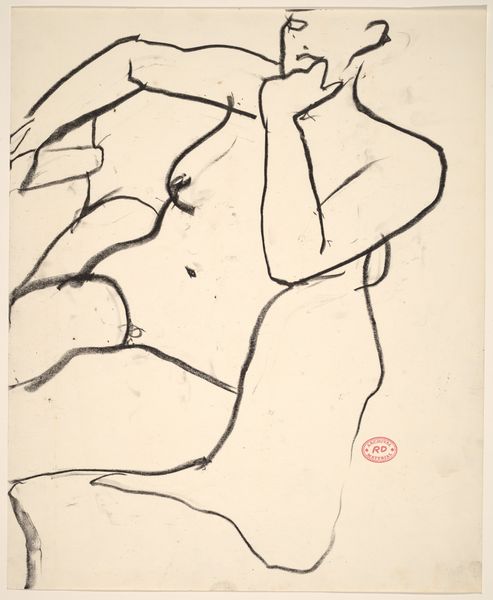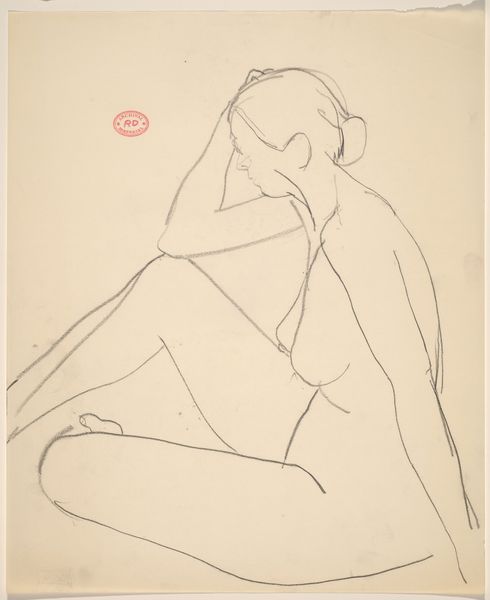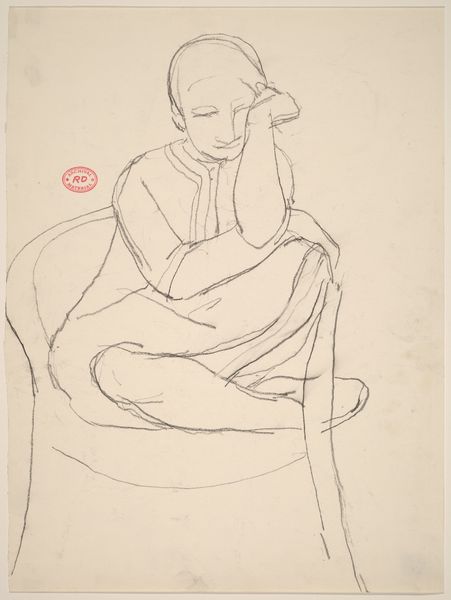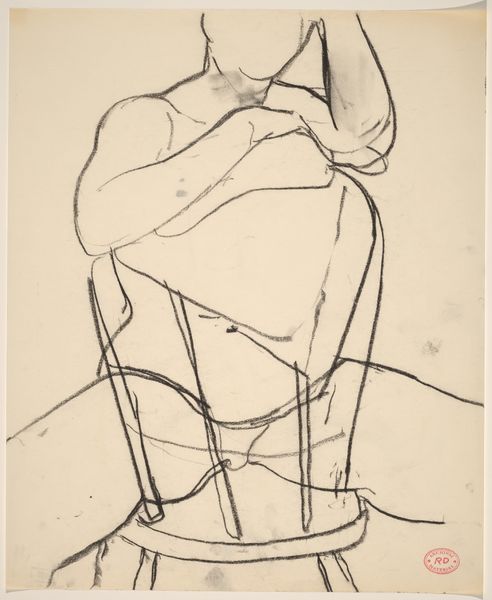![Untitled [seated female nude resting in an armchair] by Richard Diebenkorn](/_next/image?url=https%3A%2F%2Fd2w8kbdekdi1gv.cloudfront.net%2FeyJidWNrZXQiOiAiYXJ0ZXJhLWltYWdlcy1idWNrZXQiLCAia2V5IjogImFydHdvcmtzLzU5ZjU1NDAyLTc0Y2QtNGYzYy05ZmQ3LTExNGM5OGJkZGQ1OC81OWY1NTQwMi03NGNkLTRmM2MtOWZkNy0xMTRjOThiZGRkNThfZnVsbC5qcGciLCAiZWRpdHMiOiB7InJlc2l6ZSI6IHsid2lkdGgiOiAxOTIwLCAiaGVpZ2h0IjogMTkyMCwgImZpdCI6ICJpbnNpZGUifX19&w=3840&q=75)
Untitled [seated female nude resting in an armchair] 1955 - 1967
0:00
0:00
drawing, ink
#
drawing
#
figuration
#
bay-area-figurative-movement
#
ink
#
line
#
nude
Dimensions: overall: 43.2 x 34.9 cm (17 x 13 3/4 in.)
Copyright: National Gallery of Art: CC0 1.0
Curator: This ink drawing, simply titled "Untitled [seated female nude resting in an armchair]," was created by Richard Diebenkorn sometime between 1955 and 1967. What are your initial thoughts? Editor: There’s an air of vulnerability, wouldn’t you say? That exposed skin combined with her withdrawn posture... it evokes introspection and perhaps even a touch of melancholy. The simplified form speaks to the essentials of human experience. Curator: I agree. Consider that Diebenkorn created this during a time of intense social upheaval and shifting gender roles. The lone female figure, rendered so directly, speaks volumes about the experience of women navigating changing social landscapes. We see her, almost raw, beyond social constructions. Editor: Indeed. The arm supporting her face acts as a shield, doesn't it? The lines, while minimal, highlight specific parts of the body – her shoulder, her breasts, a leg… I perceive in them both, the burden of self-consciousness, but also the beauty of the simple human form outside the ideal of classical perfection. Curator: Right. It’s a potent image. The open lines challenge conventional beauty standards, highlighting the realities of the human form with unembellished honesty. It's as if Diebenkorn asks us to confront our preconceived notions of beauty and femininity. The lack of a clear setting further isolates the figure, emphasizing her inner state. Editor: The posture suggests thoughtfulness. To me, she is more than a physical nude figure: she becomes the timeless image of internal meditation on feminine identity, the very notion of self in a rapidly evolving world, with all its complexities, contradictions and self-scrutiny. Curator: Precisely. Viewing Diebenkorn’s work through a contemporary lens offers opportunities for rich dialogues surrounding representation, identity, and the enduring quest for self-understanding. Editor: It is definitely a visual symbol of this introspection—perhaps one that each generation can understand through the nuances of their time. Thank you for guiding me through this work. Curator: It was my pleasure to shed a bit of context on Diebenkorn’s drawing with you!
Comments
No comments
Be the first to comment and join the conversation on the ultimate creative platform.
